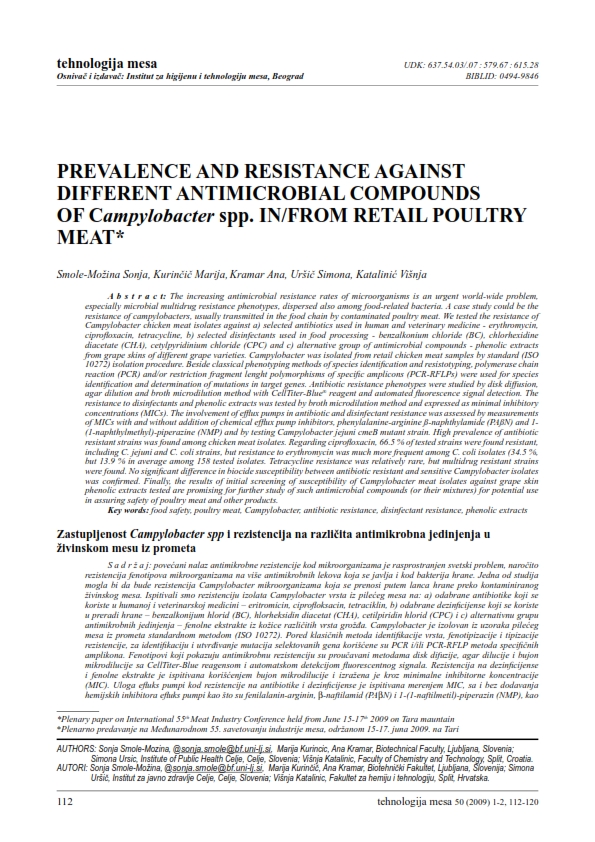PREVALENCE AND RESISTANCE AGAINST DIFFERENT ANTIMICROBIAL COMPOUNDS OF Campylobacter spp. IN/FROM RETAIL POULTRY MEAT
Abstract
The increasing antimicrobial resistance rates of microorganisms is an urgent world-wide problem, especially microbial multidrug resistance phenotypes, dispersed also among food-related bacteria. A case study could be the resistance of campylobacters, usually transmitted in the food chain by contaminated poultry meat. We tested the resistance of Campylobacter chicken meat isolates against a) selected antibiotics used in human and veterinary medicine - erythromycin, ciprofl oxacin, tetracycline, b) selected disinfectants used in food processing - benzalkonium chloride (BC), chlorhexidine diacetate (CHA), cetylpyridinium chloride (CPC) and c) alternative group of antimicrobial compounds - phenolic extracts from grape skins of different grape varieties. Campylobacter was isolated from retail chicken meat samples by standard (ISO 10272) isolation procedure. Beside classical phenotyping methods of species identifi cation and resistotyping, polymerase chain reaction (PCR) and/or restriction fragment lenght polymorphisms of specifi c amplicons (PCR-RFLPs) were used for species identifi cation and determination of mutations in target genes. Antibiotic resistance phenotypes were studied by disk diffusion,
agar dilution and broth microdilution method with CellTiter-Blue reagent and automated fl uorescence signal detection. The resistance to disinfectants and phenolic extracts was tested by broth microdilution method and expressed as minimal inhibitory concentrations (MICs). The involvement of effl ux pumps in antibiotic and disinfectant resistance was assessed by measurements of MICs with and without addition of chemical effl ux pump inhibitors, phenylalanine-arginine ß-naphthylamide (PAßN) and 1(1-naphthylmethyl)-piperazine (NMP) and by testing Campylobacter jejuni cmeB mutant strain. High prevalence
of antibiotic resistant strains was found among chicken meat isolates. Regarding ciprofloxacin, 66.5 % of tested strains were found resistant, including C. jejuni and C. coli strains, but resistance to erythromycin
was much more frequent among C. coli isolates (34.5 %, but 13.9 % in average among 158 tested isolates. Tetracycline resistance was relatively rare, but multidrug resistant strains were found. No significant
difference in biocide susceptibility between antibiotic resistant and sensitive Campylobacter isolates was confirmed. Finally, the results of initial screening of susceptibility of Campylobacter meat isolates against grape skin phenolic extracts tested are promising for further study of such antimicrobial compounds (or their mixtures) for potential use in assuring safety of poultry meat and other product.





